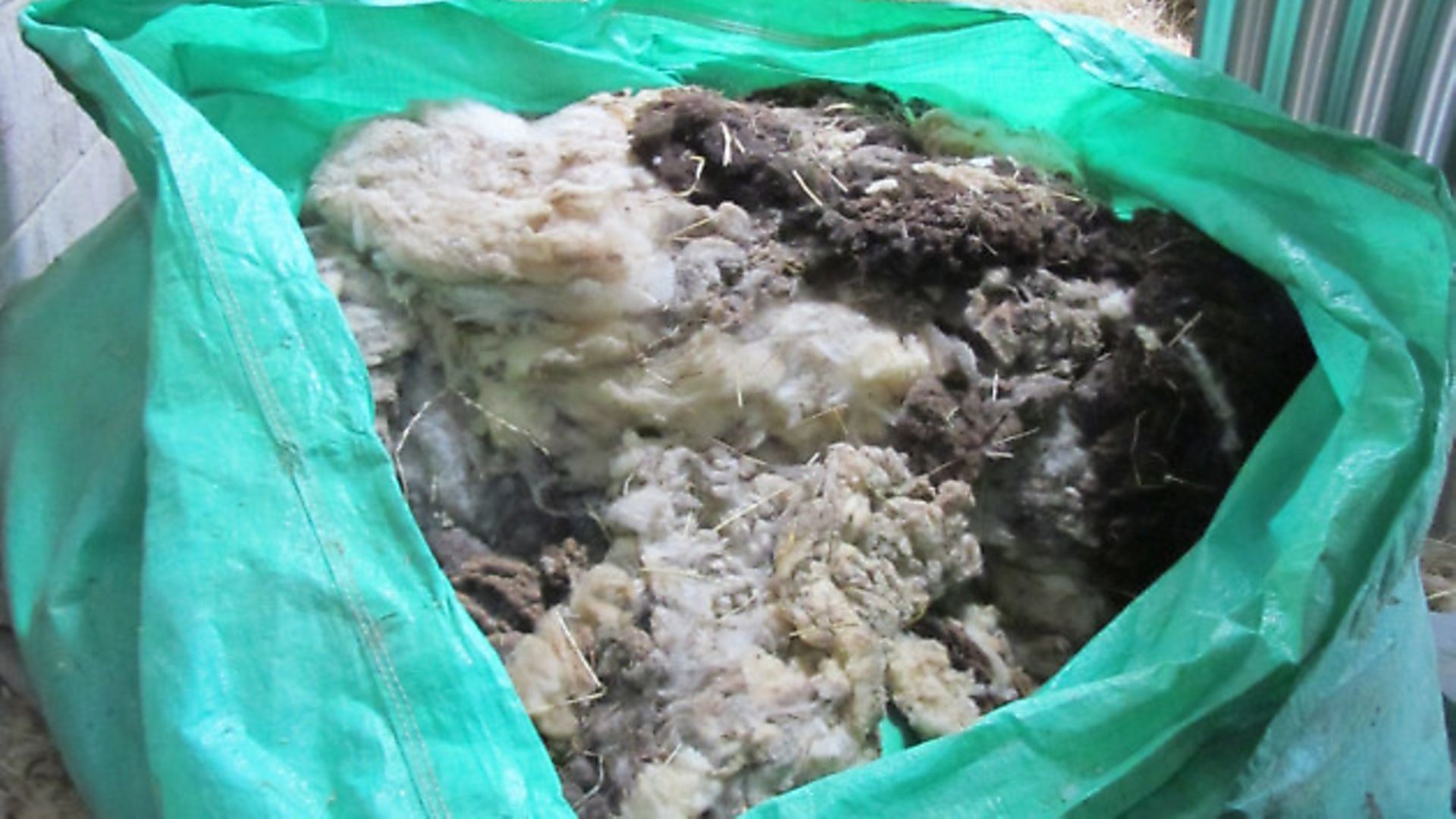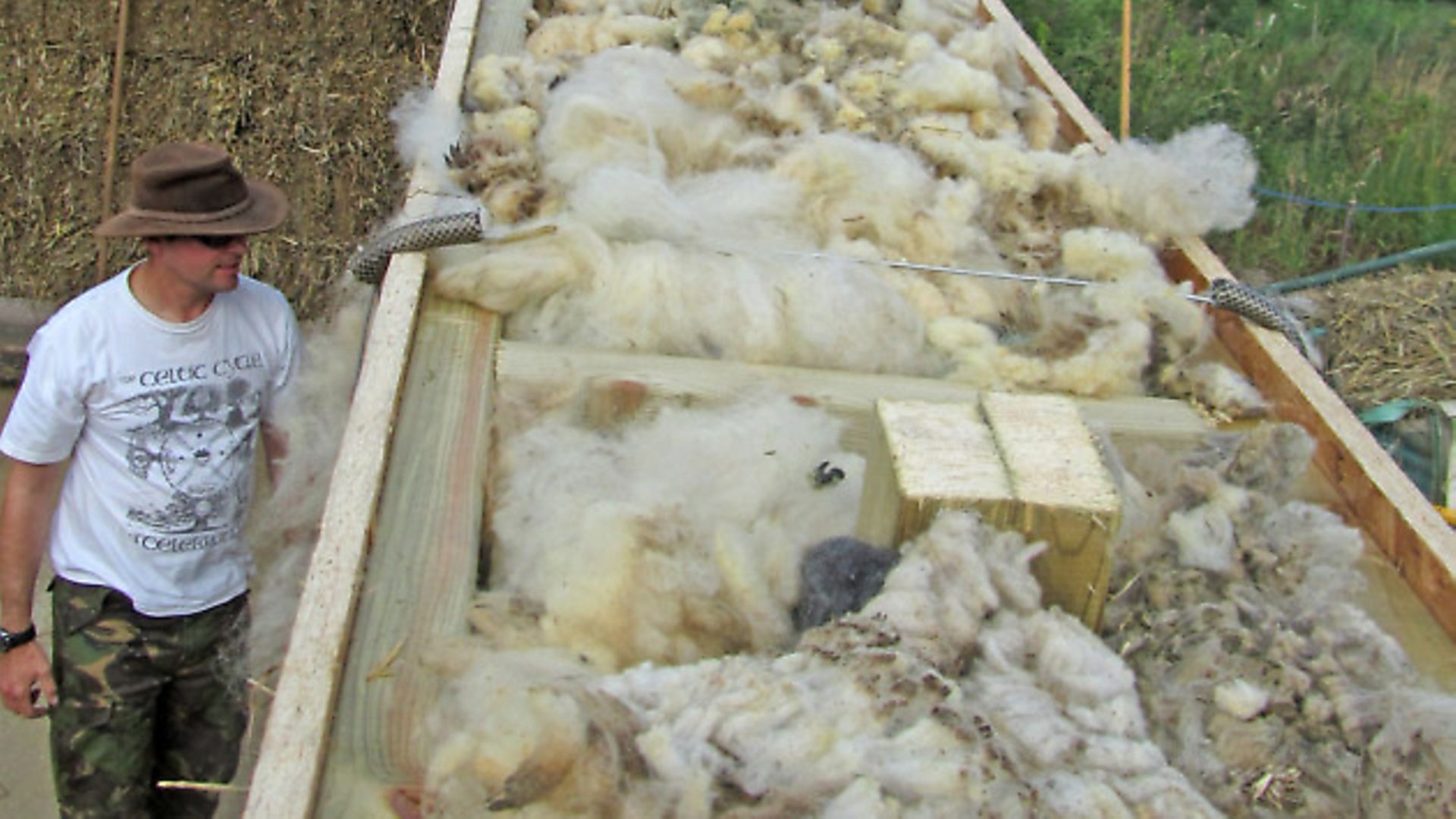Jules Moore suggests lots of woolly ideas for your fleeces

With shearing time upon us again, my thoughts turned to finding a use for my fleeces. If you are just starting out with sheep, or are wondering if you can do more with them, read on.

The shearers have occasionally taken our fleeces away after shearing and they presumably make a bit of money from selling them to the British Wool Marketing Board, but we have never bothered ourselves and they often sit around in the corner of a barn being shifted about as they get in the way.
If you have more than four sheep, you are supposed to register with the BWMB and only sell your fleeces to them, but their prices for fleeces have never been great, so I decided to look at alternatives. (It is difficult to quote BWMB prices because they vary so much, with some breeds getting 40p a kilo and others getting more than twice that, some a lot less). In recent years, alternative uses have been devised and some really original companies have sprung up around the UK.
The Natural Fibre Company in Cornwall has been trading since 1991 and I rang them for some advice. Half an hour later, I was reeling from all the things I had learned from them! They were incredibly helpful, but I had no idea that wool is not just wool – it can be coarse, lustred, short-staple, long-staple, and so on. And whilst my beautiful White Face Dartmoors may have long, lustrous curls, my Southdowns’ coarse, short fleeces make much better knitting wool and the Dartmoor fleeces get used for carpet. Shetland fleece is considered to be some of the best for knitting wool and they were quoting £7 a kilo for Gotland fleece! Also, whilst a Southdown fleece may weigh about 3kg, a WFD one could weigh twice that.
The Natural Fibre Company produces wool from a wide range of breeds of sheep, and the colours they achieve are very inspiring if you are either a knitter or looking for a new product line to add value and sell from your smallholding. Apparently, coloured fleeces are also achieving a renewed interest and can be dyed into yet more subtle and interesting colours as easily as the white wool.
Getting creative
If you fancy getting wool or blankets made up by The Natural Fibre Company from your sheep fleeces, you need about 20kg of fleece to make about 13kg of decent fibre. You can have it carded and sent back for you to spin or make felt with or they will make it into wool of all thicknesses for you. They can also put you in touch with weavers who can make it up for you into fabric or products such as blankets. A few years ago, I started the Southdown Wool Share Scheme and we got together and pooled our fleeces so that we had a decent run to have items made. It has been great fun – and I have now knitted a homemade scarf and hat to prove it.
Knitting always looks a bit daunting, but I always describe it as a bit like a paper chain – lots of loops all linked together. A bit simplistic, but if you take it bit by bit, even the basic stuff can be very rewarding. The scarf in the photo of my ball of wool (featuring Alice, my very first Southdown) was actually incredibly simple. You can also just buy one 50g ball of wool at a time and I have always thought that a patchwork quilt of simple squares knitted from the wool of lots of different sheep would be great fun to make one day.
You may want to go one step back from this and actually spin the wool yourself. There are courses across the country that will teach you the wonders of handspinning and creating your own knitting wool from scratch. The agricultural shows often have spinners with their wheels in the sheep section and it always looks a very peaceful and satisfying hobby.
Dyeing our wool is not something I have tried, but it always looks very straightforward and natural products produce some glorious colours. Rosie Beat, wife of CS writer Alan, wrote a brilliant article on ‘Plants to Dye For’ which is available online at www.thecountrysmallholder.com in the Features section.
Felt making is another hobby I would love to try if I ever have the time, and it ties in well with dyeing. I am assured by friends who do make felt that it is incredibly easy to make from home without specialist equipment and is incredibly versatile for making into other products.
Alternative uses
Fleeces can be used as insulation and they don’t seem to smell of lanolin once they settle down. When we built my strawbale classroom, we put fleeces in the box profile which supports the roof and then laid them out between the rafters in the attic space. You have to lay them out quite thickly in order to achieve a really good u-value. You can treat your fleeces by spraying them with a weak borax solution to keep the moths away. I am not completely convinced this is necessary as our fleeces often languish in the barn for years with no signs of insect damage. We shall see. Don’t put the mucky bits in with the insulation, there are better uses for those, see below. I have also used fleeces stapled into heavy duty bin bags to make insulating cushions to put in the top of my hives over winter – very easy to manage and to store afterwards.
Fleece, especially dark ones, make excellent hanging basket liners and, although it won’t exactly use up very much, a small amount pushed into a spare bird feeder will give the birds an excellent source of nesting material.
So what to do with the ‘daggings’? (The mucky bits from around their bottoms). Much like nettles and comfrey, they can be used to make a liquid fertiliser. Cram them into a bucket two thirds full. Add some rainwater and jiggle them about a bit. Leave for a week or two and stir again. Decant the brown liquid and dilute to the colour of weak tea. This will produce a lovely nitrogen rich feed for all your plants.
Wool waste is widely used in Yorkshire in the ‘Rhubarb Triangle’ where it is used as a mulch and a source of slow release nitrogen fertiliser and you can use it to put around your plants at home. Bear in mind, though, that unless it is undercover or well anchored down, you may wake up one windy morning to find your trees and shrubs adorned with wispy bits of wool!
Image(s) provided by:
Archant







